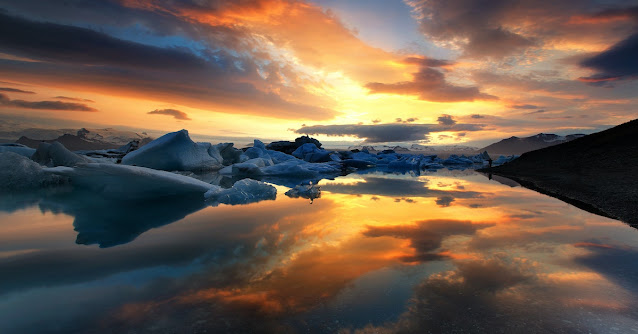Ecological Changes Caused by the Last Ice Age
The last ice age, also known as the Pleistocene Epoch, not only caused significant cooling and the growth of glaciers and ice sheets, but it also had a profound impact on the Earth's ecosystems.
How Did the Last Ice Age Impact the Earth's Ecosystems?
The cooling during the last ice age caused major ecological changes, including:
- Changes in sea levels: As much of the Earth's water was locked up in ice, sea levels were much lower during the last ice age. This led to the exposure of land bridges, such as the Bering Land Bridge, which allowed animals and plants to migrate between continents.
- Changes in vegetation: The cooling and drying of the climate caused significant changes in vegetation. Grasslands and deserts expanded, while forests shrank in size and shifted in location.
- Extinction of species: The cooling and changes in vegetation caused many species to go extinct, particularly those that were adapted to warmer climates.
Examples of Ecological Changes During the Last Ice Age
Here are some specific examples of ecological changes that occurred during the last ice age:
| Ecological Change | Description |
|---|---|
| Expansion of grasslands | The grasslands of North America expanded during the last ice age, covering areas that were previously forests. This led to the evolution of grazing animals, such as mammoths and bison, that were adapted to feeding on grass. |
| Extinction of large mammals | The last ice age saw the extinction of many large mammals, including woolly mammoths, sabre-toothed tigers, and giant ground sloths. The causes of these extinctions are not fully understood, but climate change and human hunting are thought to have played a role. |
| Migration of humans | As sea levels fell, land bridges were exposed, allowing humans to migrate between continents. This led to the spread of humans throughout the world and the development of new cultures and civilizations. |
The Legacy of the Last Ice Age
The ecological changes caused by the last ice age have had a lasting impact on the Earth's ecosystems. For example:
- The extinction of large mammals during the last ice age has affected the structure of ecosystems in the present day. For example, the absence of large herbivores in many parts of North America has allowed invasive plant species to take over.
- The migration of humans during the last ice age has had significant cultural and social impacts, shaping the course of human history.
- The changes in vegetation during the last ice age have had an impact on the Earth's carbon cycle, as different types of vegetation store different amounts of carbon.
Why Study the Ecological Changes of the Last Ice Age?
Studying the ecological changes of the last ice age can help us better understand the impacts of climate change on the Earth's ecosystems. By understanding how ecosystems responded to past climate change, we can better predict how they will respond to future climate change, and develop strategies to mitigate these impacts.




Comments
Post a Comment